Mastering the Craft of Perfect Gyoza Dough
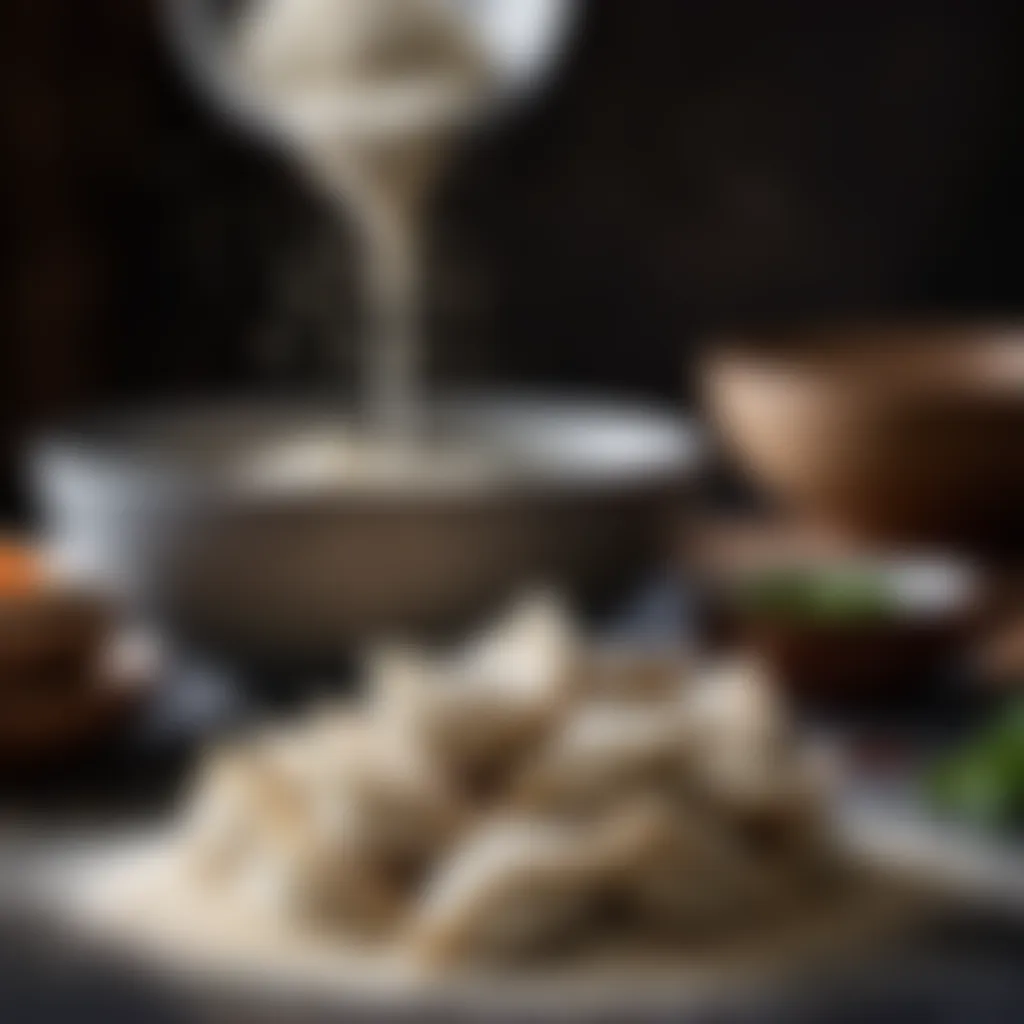
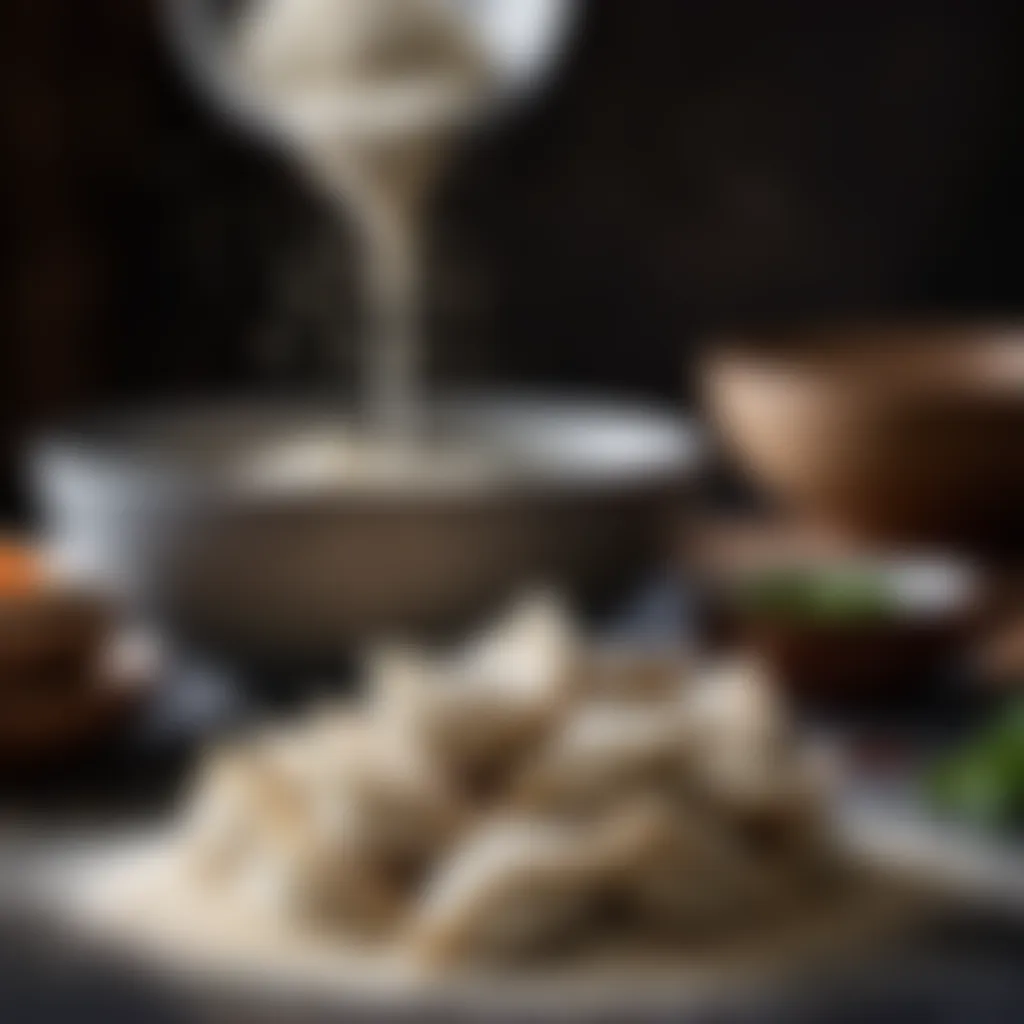
Intro
Gyoza, those delightful Japanese dumplings, are renowned for their rich filling and delicate pastry. The cornerstone of any great gyoza recipe lies in the dough. Crafting perfect gyoza dough may seem daunting at first, but with the right ingredients and techniques, anyone can master it. This guide is designed to make the process straightforward, breaking down each step while offering insights into the nuances that can elevate your gyoza to an art form.
The journey to perfect gyoza begins with understanding the basic components that come together to create the thin, flavorful wrapper.
Ingredients:
To get started, gather the following ingredients:
- All-purpose flour: 2 cups (plus extra for dusting)
- Water: 3/4 cup (boiling)
- Salt: 1/2 teaspoon
With this simple list, you’re already halfway to creating a tender and chewy dough. The choice of flour and the temperature of the water are crucial here.
Preparation Steps:
- Mixing the Ingredients: In a large mixing bowl, add the all-purpose flour and the salt. Create a well in the center, pouring the boiling water directly into it. Stir with a wooden spoon until you see the dough starting to form.
- Kneading: Once it cools enough to handle, transfer the dough onto a lightly floured surface. Knead it for about 8-10 minutes. You want to achieve a smooth, elastic texture. If the dough feels sticky, dust a little more flour as needed.
- Resting: Wrap the kneaded dough in plastic wrap or cover it with a damp cloth. Let it rest for at least 30 minutes at room temperature. This resting period is vital; it allows the gluten to relax, making it easier to roll out later.
Technical Aspects:
When it comes to making gyoza dough, precision matters:
- Temperature: Always use boiling water. This helps in developing a chewy texture that’s essential for gyoza wrappers.
- Timing: Don’t skimp on the resting time. Allowing the dough to rest properly makes a significant difference in texture.
- Kneading Technique: Use the heel of your hand to push the dough away from you, then fold it back. This technique helps build gluten, contributing to the dough's elasticity.
Cooking Process:
- Rolling: Once rested, divide the dough into smaller portions, about the size of a golf ball. Roll each piece into a circle that’s about 3 inches in diameter. Dust with flour to prevent sticking.
- Filling: Now it’s time to fill your gyoza. Remember, don’t overfill them; a teaspoon of filling in the center will do to ensure they seal well.
- Sealing: Moisten the edges of the circle with a bit of water. Fold over to create a semi-circle, pressing the edges to seal. For added flair, you can crimp the edges to create a decorative pattern.
- Cooking: Heat a non-stick skillet over medium heat, adding a tablespoon of oil. Once hot, arrange the gyoza in a single layer. Cook for 2-3 minutes until the bottoms are golden brown. Add 1/4 cup of water and cover immediately with a lid. Steam for another 5-7 minutes until the dough is cooked through.
Troubleshooting Tips:
While making gyoza dough is typically straightforward, some common issues can arise:
- Dough Too Sticky: This might happen if too much water is added. Just add a sprinkle of flour while kneading.
- Wrappers Cracking: Ensure the dough is well-rested. If it dries out too much, it may crack when rolling.
- Filling Leaking: Make sure to pinch the edges securely; maybe run your finger with a bit of water for better adhesion.
"The joy of homemade gyoza lies not just in the eating, but in every step of the making process. When you create with intention, every bite sings with authenticity.
Prologue to Gyoza
Gyoza is more than just a dumpling; it’s a canvas for culinary artistry steeped in history and regional flavors. To craft the perfect gyoza, one must understand its background and significance in the culinary world. In this segment, we explore the essence of gyoza, revealing the intricate ties it has not only to the kitchen but also to culture and tradition.
Historical Context
Gyoza's journey began in China, where it is believed they were first created during the Han Dynasty, around 2000 years ago. Over the centuries, this delicious dumpling made its way to Japan, adapting along the way. Initially, Japanese gyoza were inspired by potstickers but they evolved into a snack of their own, often filled with seasoned ground meat and vegetables.
The Japanese adaptation includes a thinner wrapper and a more delicate flavor profile, which sets it apart from its Chinese cousin. The introduction of gyoza into Japanese cuisine can be seen during the post-World War II era, when food scarcity fueled innovation in home cooking. As Japanese soldiers returned from China, they brought with them not just the recipe but also a cultural experience that shaped how gyoza would be made and enjoyed in Japan.
Gyoza grew in popularity, becoming a staple at izakayas and street stalls. Its casual nature makes it perfect for social gatherings, and over time, it transformed into a dish that is not only filling but also brings people together.
Cultural Significance
Gyoza embodies more than mere sustenance; it represents the fusion of cultures and the joy of communal eating. In Japan, it's common for families to gather around a table to prepare gyoza together, allowing them to connect while crafting something special. This act of making gyoza can be seen as a ritual, signifying togetherness.
Moreover, it holds a special spot during celebrations. For instance, during housewarming parties, gyoza is often prepared to symbolize warmth and hospitality. Additionally, the versatility of gyoza reflects regional ingredients and preferences across different areas of Japan, making each version unique.
"Making gyoza is not just about the wrapping; it’s the shared experience of laughter, conversation, and satisfaction that fills the table."
Understanding the historical and cultural threads woven into gyoza enriches the experience of making this dish. It offers a deeper appreciation for its flavors and textures, ensuring that each bite is savored not just as delicious food, but as a piece of shared heritage.
As we delve into the specifics of crafting the dough and making gyoza, keep in mind the beauty of its story, as it unfolds in your own kitchen.
Ingredients for Gyoza Dough
When it comes to crafting gyoza, the dough is the unsung hero of the dish. The right ingredients lay a solid foundation for a delightful experience, balancing texture and flavor. Understanding each component's role is key; this will ensure your gyoza wrappers are not just functional but also an exceptional part of the meal. Let’s break down what makes gyoza dough tick.
Flour Types and Their Properties
The choice of flour plays a crucial role in determining the final characteristics of your gyoza dough. Generally, different flours yield different textures and elasticity.
All-purpose flour
All-purpose flour is a staple in many kitchens, and for good reason. It strikes a balance between strength and tenderness, yielding a dough that is easier to handle without sacrificing quality. The beauty of all-purpose flour lies in its versatility. You can make gyoza with a consistent texture that isn’t overly chewy or too soft. This flour is labeled as a go-to for many home cooks, especially those who are just dipping their toes in the world of gyoza-making.
Key characteristics: Medium protein content (around 10-12%) makes it adaptable. While it won’t produce the same chewy texture as other options, it offers a user-friendly experience, particularly for beginners.
Unique features: It’s easy to find, making it a practical choice for home chefs. However, if you're someone aiming for a more authentic texture reminiscent of a professional gyoza, tinkering with other flour types might be beneficial.
High-gluten flour
High-gluten flour is reserved for those who are serious about their dough game. With a protein content hovering around 13-14%, it brings elasticity to the forefront. This elasticity is crucial when you want your wrappers to hold ample filling without tearing.


Key characteristic: The chewiness that stems from high-gluten flour allows the gyoza to have more bite, creating a delightful experience with every mouthful.
Unique feature: It’s particularly beneficial for frying as it holds together well and can withstand the heat without losing its integrity. However, it can be trickier to work with than all-purpose flour, as it requires a precise balance of hydration.
Specialty flours
Specialty flours, such as cake flour or certain regional varieties, may not always be the first choice, but they can impart unique textures or flavors. These flours are generally milled to fulfill specific needs in baking and cooking. For instance, a rice flour could offer a gluten-free alternative while maintaining a slightly different texture.
Key characteristic: Specialty flours can introduce unexpected flavors, fostering a beautiful blend when incorporated into the dough.
Unique feature: The advantage of diverse flours opens up creative avenues in gyoza-making. However, since they may behave differently from traditional flours, they can lead to varying results and may require experimenting with ratios.
Water Quality and Temperature
Never overlook the role of water in your dough! Water is not just a mere binder; it can significantly alter the outcome. Let's dive into some factors.
Mineral content
Water isn’t just O—it also carries minerals that can influence the dough’s development. Hard water, for instance, is rich in calcium and magnesium, while soft water has lesser mineral content.
Key characteristic: Minerals can strengthen the dough and enhance gluten formation, making it resilient and chewy. If your area has hard water, it could bolster your gyoza’s structure.
Unique feature: The downside? If your water is too heavily mineralized, it might affect the taste, potentially overshadowing the delicate flavors of your filling. A balanced approach can go a long way.
Temperature impact
Temperature is another aspect that deserves attention. The temperature of your water can affect the hydration and consistency of the dough.
Key characteristic: Using warm water is known to expedite gluten development, making it a common practice among many culinary enthusiasts. Conversely, cold water may slow down this process, resulting in a different texture.
Unique feature: It’s all about timing—cool water might extend the kneading time, which may be advantageous for letting the flavors meld or if you're looking to achieve a specific texture.
Salt and its Importance
Salt, often overshadowed, is a key player in dough preparation. Its importance cannot be overstated, as it impacts both flavor and structural integrity.
Key characteristic: Salt helps in building gluten strength, ensuring elasticity and improvement in the overall texture of the dough. It can help distribute moisture evenly, which helps in creating uniformity.
Unique feature: Additionally, a dash of salt enriches the flavor of the gyoza’s wrapper, enhancing the overall taste of your final dish. However, be cautious with the amount; too much salt can overpower the delicate balance of the gyoza.
In sum, paying close attention to these ingredients can significantly influence your gyoza-making adventure. Understanding how flour, water, and salt work together in harmony can make the difference between a decent and a delightful gyoza experience.
Preparation Techniques
Preparation techniques play a crucial role when it comes to making gyoza dough. They're not just a mere set of steps to follow; they greatly influence the final texture and taste of the gyoza. Getting the preparation right means you'll have a dough that is pliable yet firm, easy to work with, and ultimately delicious. The right techniques help ensure consistency, and with practice, you begin to discern the fine nuances that can make or break your gyoza experience.
Measuring Ingredients Accurately
Accurate measurement of ingredients is key in any baking or dough-making process. For gyoza, this doesn't just mean grabbing a cup and filling it up. It's about knowing how each ingredient contributes to the overall integrity of the dough. Using a kitchen scale can be particularly beneficial—flour can be compacted or aerated, leading to variations if you just scoop.
A good rule of thumb? Measure flour by weight, not volume. This approach lends precision and consistency, which are vital for achieving that perfect chewiness in the gyoza wrappers.
- Why Consistency Matters: The slightest variation in ingredient ratios can lead to a dough that’s too dry or too sticky, defeating your efforts.
- Pro Tip: For beginners, keeping a small notebook to jot down measurements can help in perfecting your method over time.
Mixing Process
Getting the mixing just right can set the stage for great dough. It’s where everything starts coming together, leading to that lovely texture we all seek in our gyoza.
Hand mixing vs. machine mixing
When you mix by hand, you're engaging directly with the dough. This tactile process allows you to feel for the right texture, adjusting as you go. On the flip side, using a stand mixer can save time and effort, especially if you're preparing larger batches. The machine mixes the dough uniformly, ensuring all ingredients incorporate well.
Both methods have their merits:
- Hand mixing: Offers more control and lets you develop a connection with what you're creating. It’s a popular choice among cooks who value tradition.
- Machine mixing: Delivers a more consistent mix with less physical exertion, a practical option for those who may find the manual labor challenging.
Choose the method that best fits your own style; both can lead to satisfactory results if done correctly.
Achieving the right consistency
Consistency in gyoza dough means finding that sweet spot between too soft and too dry. The best measure here is to look for a dough that is smooth and elastic yet holds together without being sticky. This state can be judged by feel—when you can stretch it without it tearing, you know you're on the right path.
- Key Characteristic: Well-mixed dough will form a nice ball without crumbling.
- Unique Aspect: The balance of adding water slowly to the flour mixture plays a significant role. Too much water too soon can create a messy dough, while too little can lead to a dry outcome.
Taking your time in this stage allows for better dough, which leads to better tasting gyoza.
Kneading for Perfection
Kneading is where the real magic happens. This process enhances the gluten development, providing the necessary elasticity and strength, which are crucial for forming those delicate wrappers that won’t tear easily.
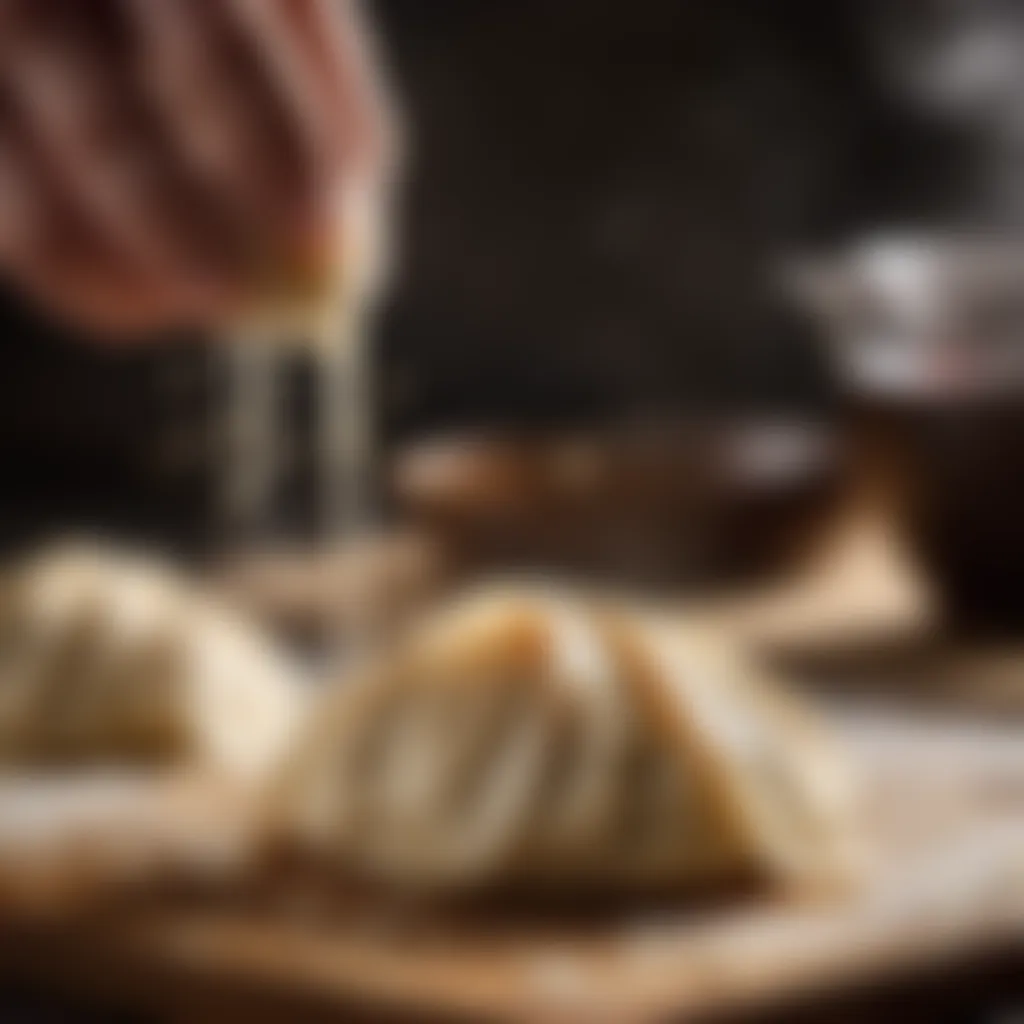
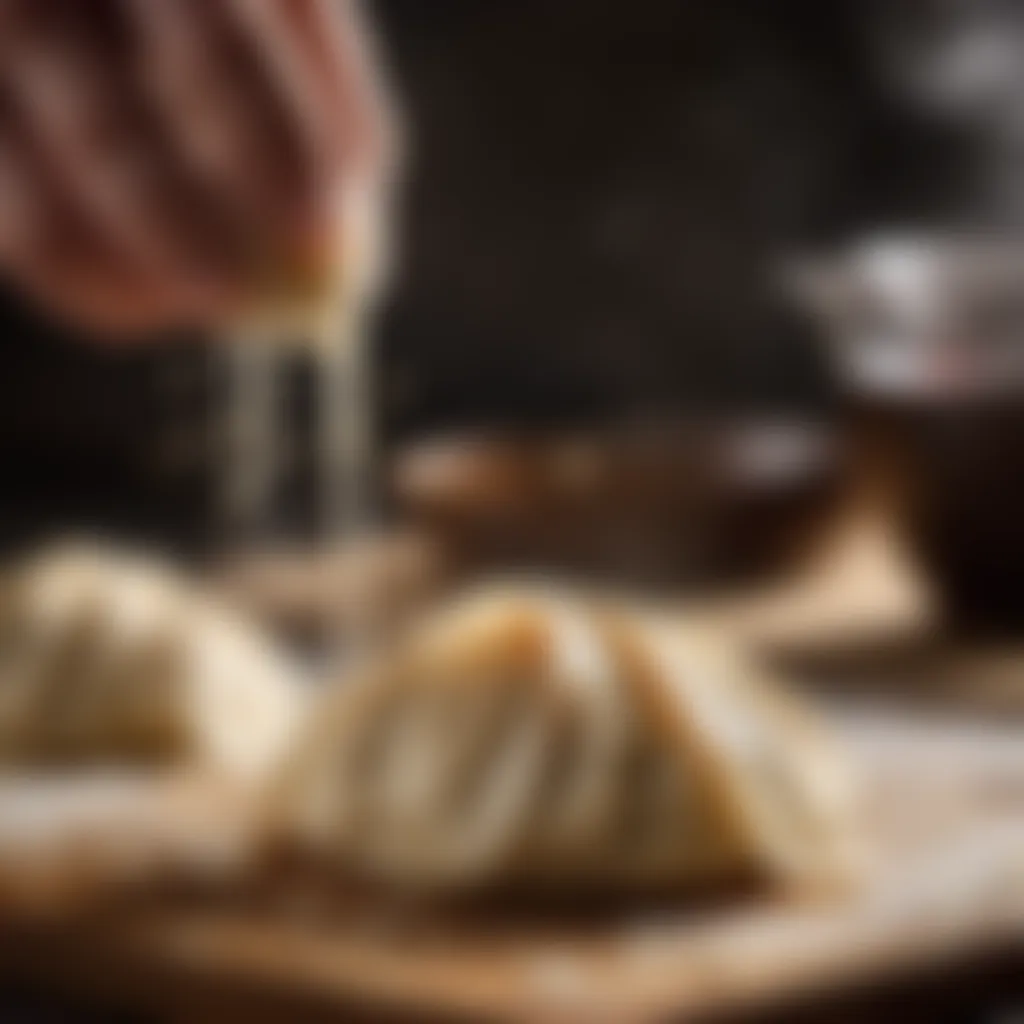
Techniques for kneading
Kneading can seem like an intimidating task, but it really just requires some simple techniques. You can utilize the classic push-fold-turn approach:
- Push and fold: Press the dough down with the heel of your hand, fold it over itself, and then turn it a quarter turn.
- Repeat: Keep at it for about ten minutes, or until the dough becomes smooth and elastic.
This not only helps to develop gluten but also gives the chef a sense of satisfaction, working the dough until it behaves just right.
Determining kneading time
Kneading time can differ based on the dough's moisture content and flour type, but a general guideline is about 8-10 minutes by hand. If you’re using a mixer, keep an eye on the dough and stop as soon as it begins to form a ball around the hook. Over-kneading can lead to a tough texture, so it's essential to learn when to stop.
- Why Timing is Important: The right kneading duration ensures the dough is not too tough or overly elastic.
- Unique Feature: Listen to how the dough sounds as you knead. A quiet, smooth sound usually indicates it's time to stop.
By honing these preparation techniques with care and practice, home cooks can achieve the perfect gyoza dough, allowing for an authentic culinary experience.
Resting the Dough
Resting the dough is often overlooked yet it plays a crucial role in the creation of perfect gyoza wrappers. Many home cooks rush through this step, but giving the dough some time to rest can significantly impact the outcome. Let’s delve into the why and how of this vital phase in the gyoza-making process.
Why Resting Matters
Texture Improvement
One of the first benefits of resting the dough is the improvement in texture. As gyoza wrappers are rolled thin, they require a certain pliability. When dough is freshly mixed, it can be tough and challenging to work with. Resting allows the flour to absorb water evenly, leading to a smoother texture. A key characteristic of this improved texture is elasticity, which is essential for wrapping those delightful fillings without tearing. For this article, an elastic dough is a beneficial choice as it ensures that your gyoza maintain their shape during cooking.
Moreover, this unique feature allows for a bit of stretch when rolling, giving a better overall mouthfeel when enjoyed.
Gluten Relaxation
Another aspect to highlight is the relaxation of gluten during the resting phase. For those unfamiliar, gluten is the protein that gives dough its structure. When dough is kneaded, gluten strands tighten, which can make the gyoza wrappers stiff. The resting period is when these gluten strands unwind.
Gluten relaxation is a popular choice in this process, as it allows the dough to become soft and flexible, making it easier to roll out. The advantage here is clear; soft wrappers can handle robust fillings without breaking apart. However, one must be careful not to rest the dough too long, as over-relaxation might lead to a dough that’s too soft to work with effectively.
Optimal Resting Times
The optimal resting time can vary, but generally, a period of around 30 minutes to an hour is recommended. This allows the dough to achieve a balance of elasticity and tenderness. It’s also worth mentioning that the resting time might need adjustments based on your kitchen conditions such as humidity or temperature. In very warm environments, shorter resting periods may be necessary to keep the dough from fermenting too much.
"A little patience during the resting phase can lead to a world of difference in your gyoza-making experience—both in the process and the end result."
In summary, the resting phase is not just a casual wait; it’s an essential step for enhancing both texture and elasticity. When making gyoza dough, don’t skip this crucial moment. Embrace it and enjoy the difference it makes in your culinary creations.
Shaping the Gyoza Wrappers
Shaping the gyoza wrappers is a vital step in the process of making this beloved dish. It’s not just about creating the vessel for the filling; it’s about ensuring each bite delivers the right texture and holds together during cooking. Perfectly shaped gyoza wrappers provide a delicate balance of thickness and size, contributing immensely to the overall dining experience. Proper shaping allows for even cooking and helps prevent the dreaded leaks that can spoil not just the presentation, but the taste as well.
Rolling Techniques
Rolling out your gyoza dough can make all the difference in the final product. The right techniques will ensure each wrapper cooks uniformly, enhancing both texture and flavor.
Uniform thickness
Uniform thickness is crucial in achieving gyoza that cook evenly. When the dough is rolled out to a consistent thickness, it ensures that every part of the gyoza cooks correctly—from the edges to the center. The ideal thickness not only helps maintain structure but also allows for the filling’s flavors to meld beautifully into the dough.
Key characteristics of uniform thickness involve rolling out the dough in a circular fashion, gently applying pressure with a rolling pin. This method is widely regarded because it avoids overly thin or thick spots that can result in a chewy texture or burnt edges.
- Advantages of uniform thickness:
- Even cooking: Helps the dumplings cook simultaneously,
- Structural integrity: Keeps the filling secure.
However, be cautious; rolling too thin can lead to tearing and overcooking during frying or boiling.
Proper size
Proper size of the gyoza wrappers is another critical component of shaping. The diameter should generally be about three inches, allowing enough space for generous fillings without making the gyoza unwieldy. The size plays a major role in determining how well the gyoza will hold together—too large, and they become difficult to pinch shut; too small, and there's not enough room for a decent filling.
Being mindful of the size not only facilitates easier handling but also helps in achieving a harmonious proportion between the wrapper and its contents. A well-sized wrapper accentuates the filling without overwhelming it; it’s a delicate balance to strike, but one that greatly enhances the dish.
- Advantages of proper size:
- Ease of handling: Makes the folding and cooking process simpler,
- Better flavor delivery: Ensures a pleasant ratio of filling to dough.
Nonetheless, misjudging the size can either lead to wasteful use of dough or a gyoza that feels insubstantial when you bite into it.
Cutting the Wrappers
Cutting the wrappers is an important skill that complements the rolling process. After rolling the dough into a flat circle, you might want to take a round cutter or a cup to achieve perfectly shaped wrappers. If the edges are left too rough or uneven, it may cause problems during the cooking process, making them hard to seal which can lead to leaks.
Preventing Dough from Drying Out
One common issue many encounter when working with gyoza wrappers is drying out. If your dough dries before you’re finished shaping, it becomes difficult to manage. To keep the dough pliable, it’s essential to cover it with a damp cloth or to wrap it in plastic wrap between batches. Keeping the dough hydrated prevents cracks and ensures that it remains easy to fold and seal, allowing you to focus on the filling instead of wrestling with the wrapper.
"The best gyoza wrappers are crafted with care, both in shape and texture. When done right, they elevate the dish to an art form."
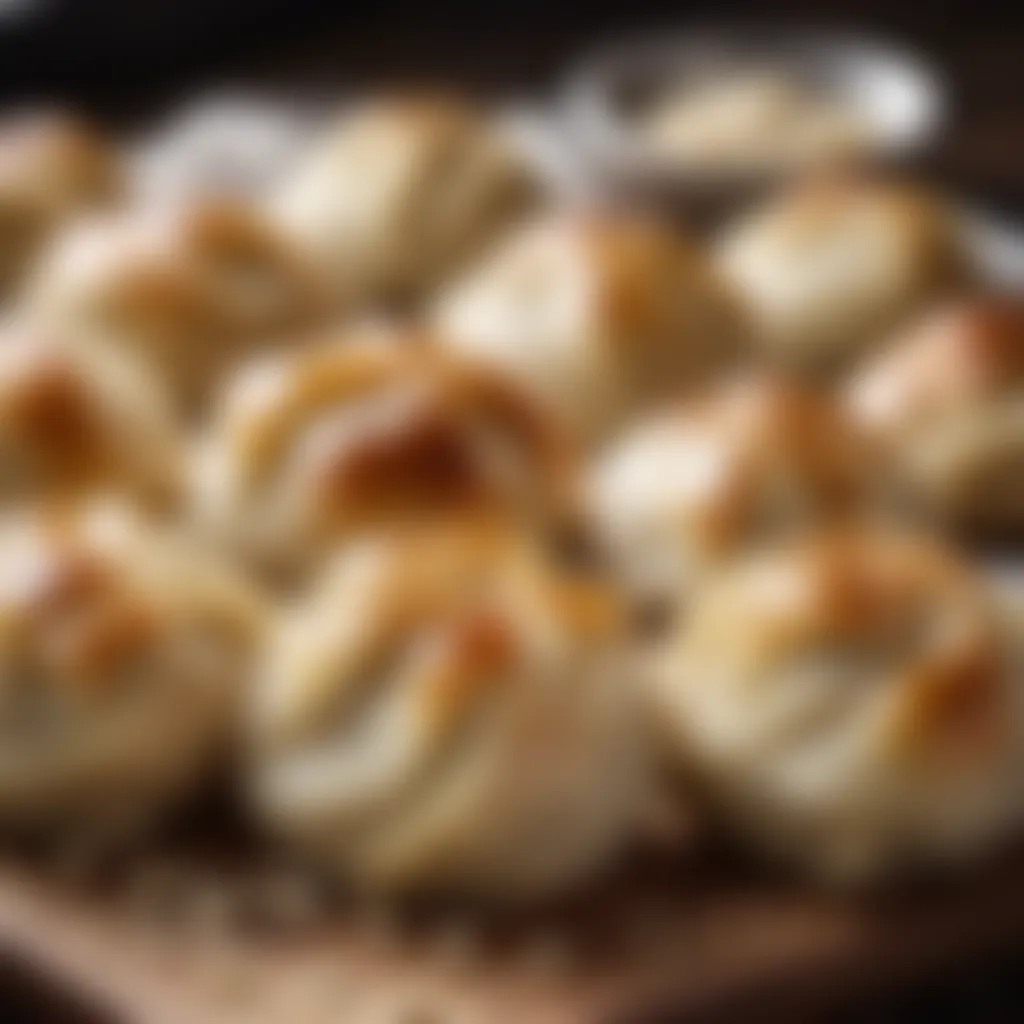
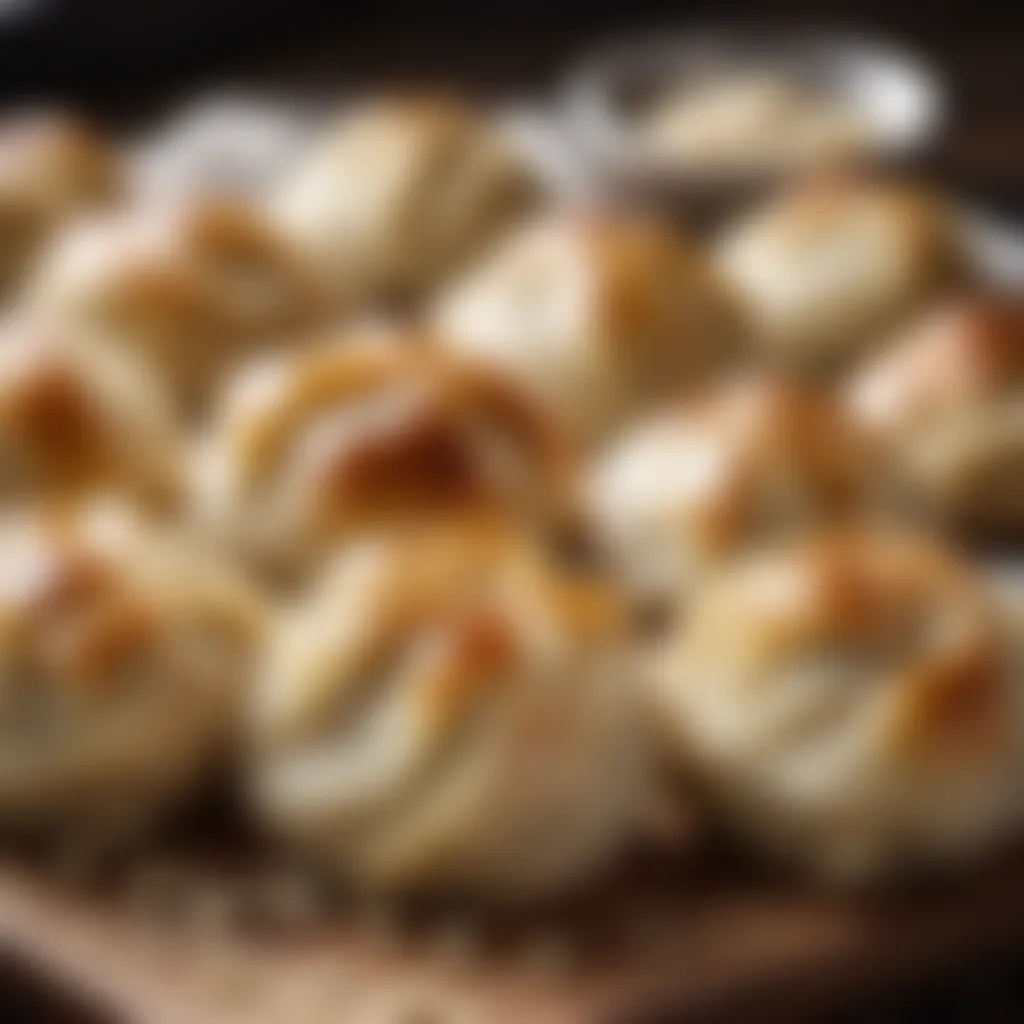
By paying attention to the techniques of rolling and cutting, and taking preventative measures against drying, you can produce gyoza wrappers that are not only beautiful but delicious, ready to fill with your choice of savory ingredients.
Common Mistakes to Avoid
When embarking on the journey to perfect gyoza dough, knowing what not to do is just as crucial as understanding the correct techniques. This section sheds light on common pitfalls and missteps that can derail your dough-making process. Identifying these mistakes not only fine-tunes your skills but also enhances your gyoza's flavor and texture. Let’s delve into the ins and outs of gyoza-making misfires and how to dodge them like a pro.
Using the Wrong Flour
One of the first and foremost mistakes is selecting the incorrect flour. The type of flour you choose can drastically affect the texture of your dough. For gyoza, many cooks lean towards all-purpose flour, which might seem tempting because of its availability. However, using high-gluten flour is preferred for its stronger protein structure, which contributes to a chewier texture. This chewy characteristic is vital for gyoza, as it holds up well during frying or steaming.
Consider these points:
- Protein content matters: Higher protein means more gluten, leading to better elasticity, perfect for wrapping around fillings.
- Storing flour correctly: Even the best flour can go south if not stored in a cool, dry place. Humidity or age can alter its quality.
"Choosing your flour is like choosing your partner for a dance; get it right, and the rhythm is perfect!"
Inadequate Kneading
Another pitfall is inadequate kneading. Not kneading your dough long enough hinders gluten development, leading to a tough or crumbly final product. Ideally, you want to knead until the dough becomes smooth and elastic.
Tips for effective kneading:
- Set a timer: Knead for at least 10 minutes. While it might feel like an eternity, this is crucial to developing the right texture.
- Feel the dough: The dough should not stick to your hands excessively and should bounce back slightly when poked. If it doesn't, keep kneading!
Skipping the Resting Phase
Finally, never ever skip the resting phase. This step is where the magic truly happens. When you allow your dough to rest, it relaxes and hydrates, making it pliable and easier to roll out. Skipping this can result in wrinkly wrappers that are difficult to shape and won't hold their filling properly.
Key things to remember during resting:
- Time matters: Aim for at least 30 minutes. This gives the gluten time to relax.
- Cover your dough: Use a damp cloth or plastic wrap to prevent it from drying out.
Embracing these considerations will not only prevent frustration but will elevate the overall quality and enjoyment of your gyoza-making experience. Avoiding these common mistakes will ensure each batch is a step closer to gyoza perfection.
Storing and Freezing Dough
When it comes to gyoza, a key aspect that often gets overlooked is how to store and freeze the dough properly. The way you handle dough can make a world of difference in your cooking experience—both in terms of convenience and quality. Understanding the right techniques for storage maintains the dough’s integrity and ensures that you can always whip up delicious gyoza when the craving strikes.
Short-term Storage
For short-term storage of gyoza dough, the primary goal is keeping it as fresh as possible while preventing it from drying out. Here are a few crucial tips:
- Wrap It Tight: Once you’ve prepared the dough, wrap it securely with plastic wrap. This keeps the moisture in and avoids any unwanted crust forming on the surface.
- Refrigeration: Place the wrapped dough in the refrigerator. Ideally, it should be used within two to three days for the best taste and texture.
- Dough Balls: Consider dividing the dough into small portions and wrapping each ball separately. This method allows you to pull out only what you need without exposing the entire batch to air.
Storing it this way is much like keeping your favorite loaf of bread fresh. Just like how nobody likes stale bread, dry dough is also not good. Here’s a quick tip: before placing the wrapped dough in the fridge, write the date on the plastic. It might seem trivial, but it helps avoid the dreaded “What was this again?” moment later.
"Effective storage is a simple step that can preserve the artistry of your gyoza preparation."
Long-term Freezing Techniques
If you’re looking to stash your gyoza dough for a longer period, freezing is the way to go. Proper freezing retains the flavor and texture, allowing you to create tasty dumplings even weeks after making the dough. Here are some pointers to ensure your dough survives the freeze:
- Divide and Conquer: Just as with short-term storage, divide the dough into manageable portions. This makes it easier to thaw only what you need.
- Use Freezer Bags: Instead of just wrapping in plastic, place the dough balls into freezer bags or airtight containers. Be sure to remove excess air before sealing them up. This helps prevent freezer burn, which can ruin the delicate flavors of your dough.
- Label Everything: Don’t forget to note the date and type of dough. You may have different kinds: plain, infused with herbs, or perhaps a colored dough for a fun twist. A simple label makes it easy to track what’s what.
To defrost, take out the desired amount of dough and let it rest in the refrigerator for a few hours or overnight. Avoid thawing it at room temperature, as this could lead to uneven textures.
By mastering the art of storing and freezing your gyoza dough effectively, you ensure that every time you are ready to cook, you have the freshest possible product at your fingertips. The convenience of having ready-to-use dough also gives you the freedom to experiment with different fillings and flavors without the time commitment every time.
Final Thoughts
Creating gyoza dough might seem like a straightforward task, but it is an art that requires attention and practice to get it just right. The nuances in ingredients, mixing, and shaping can make a world of difference in the final product. This article has sought to equip you with all the tools necessary to make perfect gyoza dough. By honing your skills through consistent practice and embracing a few individual pecularities, you can elevate your gyoza-making experience.
"Perfecting your gyoza dough is not just about following recipes; it's about crafting a piece of edible art."
The Importance of Practice
Practice is the backbone of any craft, and making gyoza dough is no exception. The more you immerse yourself in the process, the more intuitive it becomes. Initially, results may not meet your expectations – the dough might be too sticky or perhaps too dry. This is normal when learning. Take it in stride.
The key elements that improve through practice include:
- Texture Mastery: Each mix teaches you the right feel of the dough. You'll start to recognize when it’s just right and avoid the dreaded mushy or too firm results.
- Kneading Confidence: With each knead, instinct will grow. Knowing the perfect amount of kneading time takes experience – it isn’t something a timer can define.
- Technique Refinement: Rolling and shaping will no longer require concentration as you become comfortable with the movements, letting your hands do the work naturally.
By committing to practice, you build a familiarity that allows you to make adjustments instinctively. It is this intuition that separates the novice from the experienced gyoza maker.
Embracing Individual Variation
Each cook brings personal flair to their kitchen, and making gyoza is no different. The beauty of this art lies in its flexibility. Depending on your local ingredients or personal preferences, variations can bring out a unique character in your gyoza dough.
Consider these individual variations:
- Flour Choices: Experimenting with different flour types could yield different textures. You might find you prefer a combination of all-purpose and high-gluten flour, for example.
- Water Temperature: While the general guideline might suggest room temperature, you could find that slightly hot or cold water suits your taste better. This will change both texture and flexibility.
- Salt Application: Altering the salt ratio can lead to distinct flavors that reflect your culinary identity.
Embracing these differences not only makes the process more enjoyable but fosters a deeper connection with the food you're creating. This is your dough, born from your hands, tailored to your taste.
In essence, here’s what to take away: Mastery of gyoza dough is not a destination but a journey. Enjoy each step, relish the mistakes, and watch your skills blossom.







